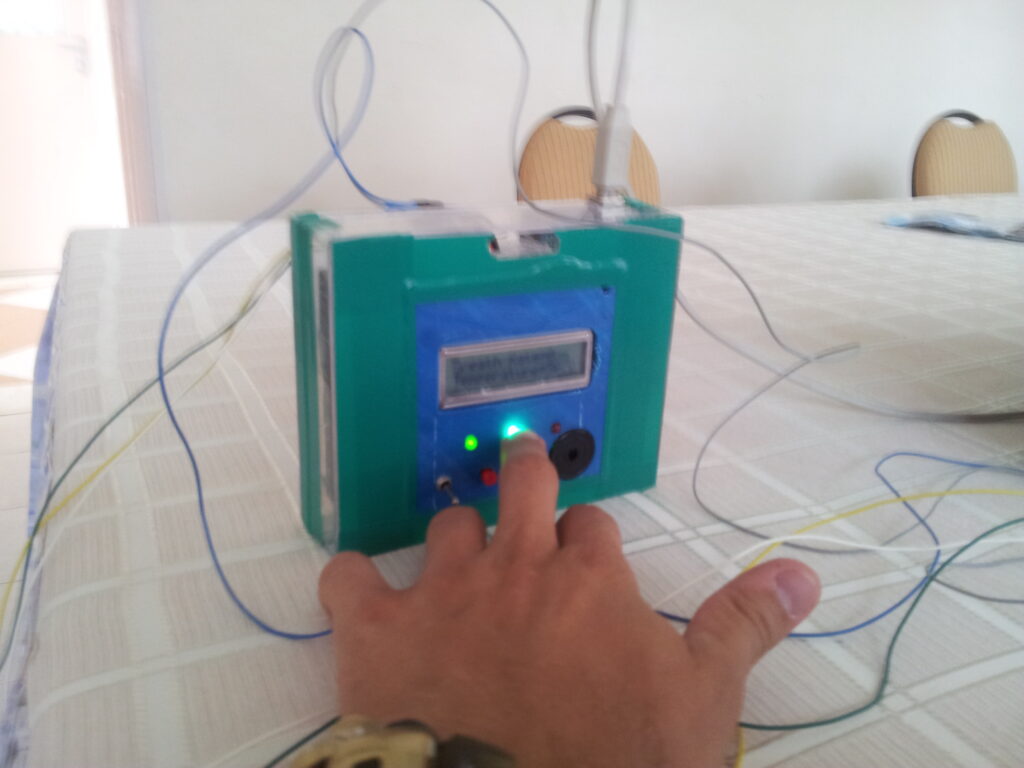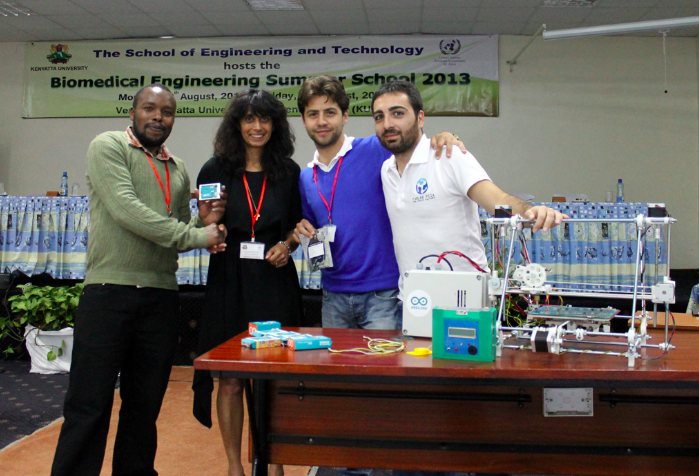A Baby Monitor goes open source: interview to the team

Last August, a team composed by researchers coming from Research Center E. Piaggio of University of Pisa and FabLab Pisa, went to Nairobi to work at the Summer School developing an Open Source Baby Monitor for OS4BME (Open Source for Biomedical Engineering). Arduino supported the project with some hardware and following their adventure in Africa.
Arti Ahluwalia (Professor of Bioengineering), Daniele Mazzei and Carmelo De Maria (Biomedical Engineers, co-founders of FabLab Pisa and researchers at the Center) are now back in Italy and I interviewed them as this project raised interest from the open source community.

Which tools did you use to prototype the baby monitor and why they were useful?
We decided to use open source tools to design and prototype the baby monitor because we believe economic barriers can’t stop the creative process. Our results will be the starting point for future projects, following the open source philosophy. A baby monitor is composed by a 3D-printed mechanical frame, an electronic board and a control software. Thus, in order, we used FreeCAD for mechanical design, MeshLab to analyze the quality of the mesh, Slic3r (http://slic3r.org/) to generate the machine code, Pronterface to send commands to a Prusa Mendel RepRap. The brain of the baby monitor, electronic and software, is based on Arduino. MediaWiki helped us in documentation. As you can see the list is quite long, and the final result is a credit to all the components. This interview gives us the opportunity to say thank you to all the people who work in these projects.

In which way the participants played an active role in the workshop?
From the first day, participants were divided into working groups in order to facilitate interaction. The groups were given specific tasks related to documentation and note taking, so as to collect all the notes for the final wiki document. On the third day the groups were split up into practical working groups according to the interests of individuals, whence they were given an aspect of the baby monitor to design, develop and realise.
What type of collaborative processes did you start and what are the next steps (documentation, sharing..etc)?
The processes involved a sort of twinning between Fablab Pisa and Fablab Nairobi. We delivered the Arduino donated kits to the Fab Lab Nairobi and Kenyatta University. FabLab Pisa introduced the FabLab Nairobi to the IOTPrise project of University of Pisa. Being part of the IOTPrise community FabLab Nairobi became beta tester of UDOO, an open hardware low-cost single-board Android/Linux ARM computer with Arduino-compatible integration.
As the importance of the action, particularly as regards the need to develop excellence and sustainability in Biomedical Engineering higher academic was noted by all. Thanks to our technical guidance and previous experience with human resource building in developing countries, all academic participating academic institutions have decided to pool their resources towards the creation of an African Biomedical Engineering consortium, dedicated to sharing curriculum development, staff and student training and teaching materials.
You started the this challenge with some expectations, what happened of unexpected?
We had expected the action to be an immediate success, and it was. Most students and staff were unaware of the existence of tools such as Arduino, FreeCad, Slicer, Media Wiki etc, let alone the power and implications of open source design and prototyping. The course was instrumental in bringing this knowledge to the participants, and their keen interest throughout the introductory part, particularly on 3D printing and rapid prototyping was apparent. We also expected immediate follow ups (requesting more information and documentation) from all participants. Actually this did not happen. We do need to be sensitive of cultural differences and of the fact that our priorities may not be the same as those of the participants.
Dealing with healthcare is not an easy task, how are you meeting with regulatory and performance standards?
As Biomedical Engineers, we were fully aware that biomedical devices must ensure patient safety and efficacy above all. Part of the course was purposely dedicated to biomedical device standards, regulation and performance, and this is what made the action unique with respect to others such as cooking hacks etc.
How can people collaborate now?
One of the goal of OS4BME project was to create a common language, a shared way of thinking on which build future objectives. African engineers can use now our same instruments, and we know by first hand which are the real needs, desires and enthusiasm of African people: these facilitate an active collaboration. As aforementioned, FabLab Nairobi is involved together with FabLab Pisa in the IOTPrise project community.
In parallel, the University of Pisa is working with the ABEC and Boston University to raise funds for further courses and student and staff exchange. I have to stress that our (or at any rate my) objective is enable African countries to manage, develop and maintain their own medical equipment by transferring Biomedical expertise to African universities.

Learn more on their wiki
See more pictures on the Fablab Pisa website
Read the press release of the University of Pisa (in italian)
Leave a Reply
You must be logged in with your Arduino account to post a comment.